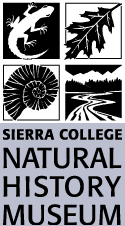Lectures 1997
Earth From Space
by Howard Doughty
Howard Doughty is a geographer with a dazzling, yet humbling story to tell about planet Earth. Utilizing spectacular photographs and remote sensing images from NASA's Johnson Space Center and other satellites, Mr. Doughty portrays ours as a beautiful blue and green planet. New technology enables us to locate forests, grasslands, ocean depths, volcanoes and other elements of Earth from great distances. Yet, when we begin to look closely, to look at the human signature on Earth, we see another story. This 70-minute spectacular uses more than 200 photographs and images and provides us with a very unique view of our home.
Mr. Doughty is Chairman of the World Vista Foundation and is a Fellow of the Royal Geographical Society. He has lectured throughout the United States and Canada.
Field Trip - Sandhill Cranes Tour
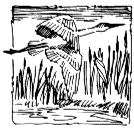 Each winter millions of waterfowl venture southward into the Sacramento and San Joaquin valleys to avoid the harsh northern winters. Among long-distance migrants is the Sandhill Crane, a tall and regal bird which moves in flocks of hundreds to thousands. Join Sierra College ornithologist Brian Williams and other scientists on a tour of local wetlands, including Stone Lakes National Wildlife Refuge, Cosumnes River Preserve and the Woodbridge Ecological Area. This tour will focus upon the ecology of wetlands, the identification of waterfowl and the biology of the Sandhill Crane. We will follow them throughout the day, including their evening roosting sites behind locked gates.
Each winter millions of waterfowl venture southward into the Sacramento and San Joaquin valleys to avoid the harsh northern winters. Among long-distance migrants is the Sandhill Crane, a tall and regal bird which moves in flocks of hundreds to thousands. Join Sierra College ornithologist Brian Williams and other scientists on a tour of local wetlands, including Stone Lakes National Wildlife Refuge, Cosumnes River Preserve and the Woodbridge Ecological Area. This tour will focus upon the ecology of wetlands, the identification of waterfowl and the biology of the Sandhill Crane. We will follow them throughout the day, including their evening roosting sites behind locked gates.
Arctic National Wildlife Refuge
by Rob Fernau
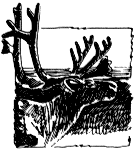 This refuge is an 18 million acre paradise for millions of seasonal inhabitants, from small migratory birds to majestic caribou. This northernmost of all federal refuges stretches from the Beaufort Sea of the Arctic Ocean to the flanks of the Brooks Range in Alaska. The tundra habitat supports hundreds of bird species who annually nest during the long Arctic summer days to the largest herd of Barren ground caribou in North American.
This refuge is an 18 million acre paradise for millions of seasonal inhabitants, from small migratory birds to majestic caribou. This northernmost of all federal refuges stretches from the Beaufort Sea of the Arctic Ocean to the flanks of the Brooks Range in Alaska. The tundra habitat supports hundreds of bird species who annually nest during the long Arctic summer days to the largest herd of Barren ground caribou in North American.
Ph.D. candidate at UC Davis, Rob Fernau has spent two research seasons in this refuge and will portray is ecological significance using photographic slides. He will discuss plant/animal interactions, geography, native human utilization and current threats to the refuge by oil and gas exploration.
Siberian Forest and Land Management
by Bruce Van Zee
This slide-illustrated discussion of past and present land management and forestry practices in Siberia reviews government policies, and public attitudes of the Russian Far East affecting the Boreal forests (Taiga) with comparisons to North American land management policies. Included is a view of Russian nature preserves compared to American national parks and refuges.
Bruce Van Zee is a professional forester, experienced in everything from timber sales to endangered species to oil spill restoration. He has worked in and administered staff in California and Alaska and was responsible for establishing the first "Sister Forest" project in Russia—linking the Chugach National Forest, Alaska with the Magadan Nature Reserve, a scientific and educational exchange.
The Great Dinosaur Transition
by Frank DeCourten, Sierra College Natural History Museum
 Dinosaurs were the dominant land animals in North America for over 140 million years. Scientists can now recognize several unique dinosaur faunas that appeared during this long interval of evolution. Current research is beginning to unravel the physical and biological events that led to the succession of dinosaur faunas.
Dinosaurs were the dominant land animals in North America for over 140 million years. Scientists can now recognize several unique dinosaur faunas that appeared during this long interval of evolution. Current research is beginning to unravel the physical and biological events that led to the succession of dinosaur faunas.
One of the most intriguing of all dinosaur faunal transitions occurred in the interval from about 100-135 million years ago, during the Early Cretaceous Period. This was a time of complete change in the character of North American dinosaurs. During the Early Cretaceous transition, the long-necked sauropods and the plated stegosaurs began their slide toward extinction, while the earliest of the horned ceratopsians, armored ankylosaurs, docile "duck-bills" and the slashing dromaeosaurs ("raptors"!) first emerged on the scene. This slide-illustrated lecture will explore the pattern of the Early Cretaceous transition in North American (including California) and examine the possible causes for it.
The Spirit of John Muir
by Lee Stetson
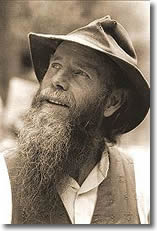 Back again for his annual performance at Sierra College, world renowned actor, Lee Stetson of Yosemite will return to do another one-man play on the life of California's most famous conservationist, John Muir.
Back again for his annual performance at Sierra College, world renowned actor, Lee Stetson of Yosemite will return to do another one-man play on the life of California's most famous conservationist, John Muir.
The spirit of John Muir, once again roaming his beloved wilderness, comes alive with the vivid story-telling of backcountry explorations, glaciers, meeting Emerson, and more. One moment you'll be riding with Muir on a snow avalanche for 3,000 feet down one of the Yosemite Valley walls and the next climbing up a 500 foot ice cone at the foot of Yosemite Falls.
Baja California, Mexico: The deserts, the mountains and the sea
by Joe Medeiros, Sierra College Natural History Museum
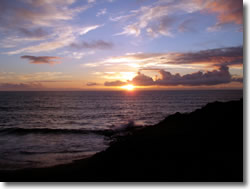 Bordered by the Pacific Ocean on its west and the Sea of Cortes on its east, Baja California is a magical maze of mountains, islands, deserts and biodiversity. This 900 mile-long peninsula formed by the rifting of the San Andreas Fault is virtually an ecological island that has inspired explorers, naturalists and writers from Scammon to Steinbeck.
Bordered by the Pacific Ocean on its west and the Sea of Cortes on its east, Baja California is a magical maze of mountains, islands, deserts and biodiversity. This 900 mile-long peninsula formed by the rifting of the San Andreas Fault is virtually an ecological island that has inspired explorers, naturalists and writers from Scammon to Steinbeck.
In this single body of land there exists granite mountains exceeding 10,000' in elevation, unique deserts, some of which receive summer rainfall, hundreds of endemic plants and animals, myriad islands, each harboring their own special creatures and hundreds of miles of coastline, bays and lagoons where famous whales seek safe harbor during calving and mating times. This slide-illustrated lecture summarizes dozens of expeditions by the speaker into this international treasure to our south.
Five Hundred Amazon River Miles by Kayak
by Eli Rush, Rainforest Expeditions
After a year of preparations Eli Rush and Al Stern found themselves on the bank of the Rio Tahuamanu in northern Bolivia. Their folding expedition kayaks loaded down with supplies, they began a 26-day journey that took them down two rivers and up a third. They paddled among flocks of parrots and macaws, tribes of monkeys and thousands of brilliantly colored butterflies. They encountered Indian rubber tappers, dined on piranha, skirted quicksand and camped with jaguars that prowled and screamed close to camp. While both were seasoned wilderness travelers, neither of them had any experience paddling and camping in such a totally foreign environment. By the time they reached their destination they were darker, skinnier and forever changed by the experience.
China and Hong Kong: The Awakened Dragon—Transition to Power
by Carol Jean Cox, Sierra College Geography Department
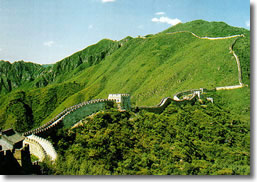 China is one of the world's oldest and most dynamic civilizations. Today, this country is ruled by a centralized Communist government but is well on the way toward developing an effective nationalized capitalistic economic system. With one-fifth of the earth's population, and one of the world's most resourceful land masses, China is destined to become one of the major influences of the next century. Compare China of 1983 and 1997 through lecture and slides. Political, economic, environmental and social developments, as well as future prospects for Hong Kong and China will be discussed.
China is one of the world's oldest and most dynamic civilizations. Today, this country is ruled by a centralized Communist government but is well on the way toward developing an effective nationalized capitalistic economic system. With one-fifth of the earth's population, and one of the world's most resourceful land masses, China is destined to become one of the major influences of the next century. Compare China of 1983 and 1997 through lecture and slides. Political, economic, environmental and social developments, as well as future prospects for Hong Kong and China will be discussed.
Rainforests and Tropical Ecology
by Rob Fernau, UC Davis
What is a tropical rainforest? What is tropical vegetation? Where and why do they exist on Earth? Join Rob Fernau in a world-wide tour of the tropics in Costa Rica, the Peruvian Amazon, Borneo, Sulawesi and other locations where he has visited, studied and toured. These dense, verdant and diverse world ecosystems are treasure-chests of biological diversity, sources for unending curiosity and amazement and rich cornucopia of foods, goods and pharmaceuticals. Yet, they are among the world's most rapidly vanishing ecosystems.
Sierra College's Headless "What'sit?"
by Charles Dailey, Sierra College Biology Dept.
 Join Sierra College zoology instructor, Charles Dailey on a Paleontology dig to discover the identity of a giant, previously unknown, fossil mammal. This extinct mammal was discovered after erosion destroyed its head fossils and exposed part of its body at Honey Lake, near Susanville, CA.
Join Sierra College zoology instructor, Charles Dailey on a Paleontology dig to discover the identity of a giant, previously unknown, fossil mammal. This extinct mammal was discovered after erosion destroyed its head fossils and exposed part of its body at Honey Lake, near Susanville, CA.
Since its discovery thousands of bones of comparable animals have been compared and we're pretty certain that it was ... (to be announced at this seminar!). Come learn how investigations by our Science faculty and students have helped reveal the identity and incredible history of "Ichabod", Sierra's 600 pound, headless "what'sit?"
Caribou, the Arctic and Oil
by Karen L. Gerhart, Sierra College Biology Dept.
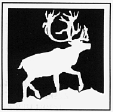 The Porcupine Caribou Herd of 175,000 animals migrates several hundred kilometeres each year from its wintering grounds in the Yukon Territory of Canada to its highly concentrated calving grounds on the coastal plain of NE Alaska - all within the Arctic National Wildlife Refuge. Plans to develop oil in the 1002 region of ANWR may threaten caribou calving success, herd health, and predation as well as the entire fragile arctic tundra ecosystem and the very culture of the Gwich'in northern people. Join Dr. Gerhart, who did her doctoral research on the nutritional ecology of this outstanding herd, in a slide-illustrated lecture.
The Porcupine Caribou Herd of 175,000 animals migrates several hundred kilometeres each year from its wintering grounds in the Yukon Territory of Canada to its highly concentrated calving grounds on the coastal plain of NE Alaska - all within the Arctic National Wildlife Refuge. Plans to develop oil in the 1002 region of ANWR may threaten caribou calving success, herd health, and predation as well as the entire fragile arctic tundra ecosystem and the very culture of the Gwich'in northern people. Join Dr. Gerhart, who did her doctoral research on the nutritional ecology of this outstanding herd, in a slide-illustrated lecture.
